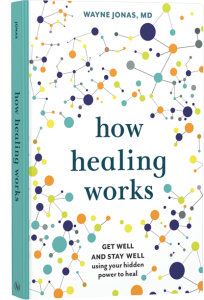People are creatures of habit. Science shows that self-regulating systems—like people—constantly work to return to the same form and behavior after they have been stressed or traumatized. That automatic rebound response—the same response that fuels healing and recovery—also makes behavioral changes uncomfortable and hard to implement for many people.
Let’s face it, we all do things that we know are not healthy. In fact, allowing ourselves occasional unhealthy behaviors—when we build them into life intentionally—can help us maintain healthy behaviors most of the time. But it is important that these behaviors don’t become your main habits. Once they do, they are hard to break and sometimes require professional help.
Stress, such as dealing with quarantine and the coronavirus pandemic, disrupts routine and can exacerbate bad habits. Many people, for example, have reported eating and drinking more, and exercising and socializing less since the start of the pandemic.
In the natural world, materials typically have two options upon experiencing stress, such as what we have experienced since 2020: they can return to normal or break.
People, however, have a third option: they can use the stress to grow by working to implement good habits and correct bad ones. True growth comes from this struggle.
Many people, for example, have developed unhealthy eating habits under quarantine. Now it is important to create a positive relationship with food. This means not only accepting that food rules or traditions—such as the need to finish everything on your plate—may no longer serve you but also learning to listen to both your hunger and your fullness. Enjoy what you eat by eating mindfully—not while watching television or staring at your phone. Focus on eating healthy rather than on eating less; food is fuel and is essential for our bodies to work. Furthermore, if you are someone who struggles with body positivity, it is crucial to limit your exposure to unhealthy body images in the media. Realize that we will all have different bodies.
The problem lies not in knowing what you should be doing, but rather in making these changes habitual and meaningful to you. Link good behavior to meaning and joy in your life. This will prepare you emotionally and mentally to sustain the behavior in the long run.
Below are some tips for curtailing unhealthy behaviors and reigniting healthy ones:
- Develop a plan. Pick one or two small changes that feel manageable and that give you pleasure, such as two yoga poses or switching from white to wheat bread.
- Pick something realistic to change. Choose small, attainable changes. Don’t set yourself up for failure by picking something overwhelming only because you feel you should pick it. And if you’re trying to break a large bad habit, break it into small parts and do one at a time.
- Tell somebody. Have somebody who will check in on your progress and hold you accountable.
- Develop a community. Look for or create social situations that encourage healing behaviors, whether this is a walking club, a religious group, or your family or friends. Remember that even two people are a community.
- Plan for a slip. It is important to incorporate time when you are not doing the new behavior, or intentional time when you “slip up.” These times are key to long-term change.
- Know the real reason for making the change. The most effective reasons for sustained behavior change are intrinsic (I want to feel better) rather than extrinsic (I want to be liked).
- Prepare to be uncomfortable for a while. Change is not easy. Your plan should include how to deal with that.
- Be ready. Sometimes the time is not right to make a change. Maybe today is not the day to start. If so, admit that and take more time to prepare.
- Start. Are you a chronic procrastinator (about 20% of people are) or just procrastinating on this one behavior? If chronic, seek help to deal with that first.
- Ask your doctor. Discuss lifestyle and prevention behaviors with your medical team. Ask about any helpful resources your health care services offer. These could include behaviorists, health coaches, nutritionists, fitness trainers, or rehabilitation specialists.
Even before all of these, the very first step is to identify the bad habit.
Below are some tools that we have designed to help you identify them and to start implementing healthy ones by focusing on creating positive change and building confidence in your ability to change. Take your time filling them out; this could be the first step in really making a difference in your life.
Above all else, however, be kind to yourself. Remember that 2020 was a year unlike any other. Be grateful to your body for carrying you through it and don’t be hard on yourself for having developed less-than-healthy habits. Don’t dwell on the past. Instead, focus on the future and on developing healthy ones moving forward.
 Take Your Health Into Your Own Hands
Take Your Health Into Your Own Hands
Drawing on 40 years of research and patient care, Dr. Wayne Jonas explains how 80 percent of healing occurs organically and how to activate the healing process.



